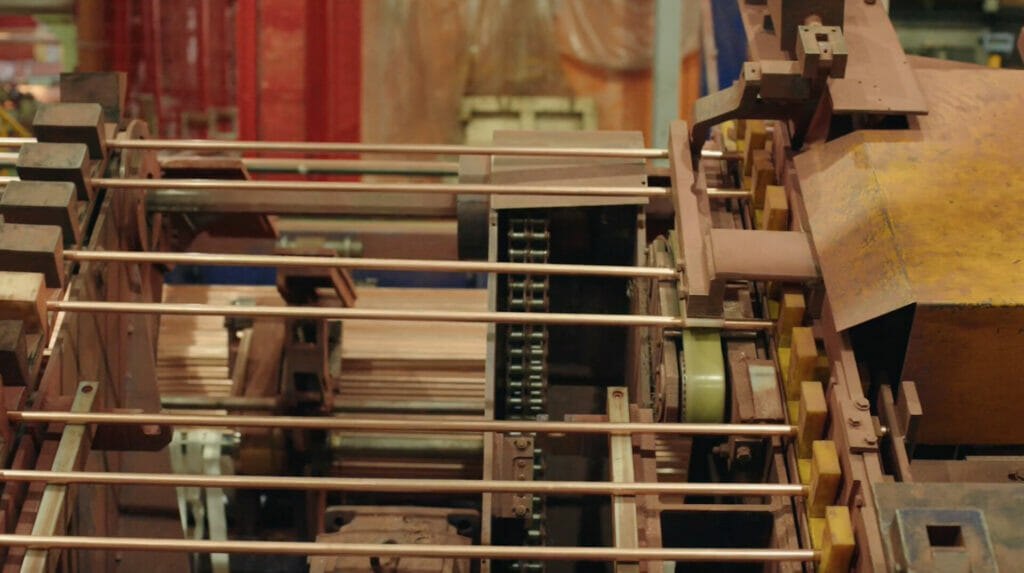
Copper is one of the most versatile materials on the planet and has played a key part in bringing about change, inventions, and new opportunities across society.
It has long been praised for its natural beauty and inherent material properties, yet most of its uses, remain hidden throughout our homes, hospitals, public transport, offices, and in renewable energy sources.
So just how essential is copper to everyday life?
Homes and transport
In your home, you’ll find copper running through your walls, supplying water from your boiler to your bathroom and kitchen, powering your shower and providing hot water to your taps and radiators.
It’s also found in the wiring of household electronics and appliances such as your kettle, microwave, oven, and television.
Copper is also a key material for heating homes, not just in traditional central heating systems but in sustainable heating alternatives such as solar panels, solar thermal systems and air source heat pumps. These systems rely on copper to improve efficiency, as it is a superior conductor of heat.
When choosing which pipes to use with heat pumps flow rate and pressure drops must also be considered. As well as having serious environmental problems, plastic pipes have a considerably smaller bore size and internal area than copper, which has a dramatic effect on flow characteristics. If installers select plastic pipe instead of copper without checking the size correctly, this could negatively impact the heat pump’s performance.
Outside of the home, copper is essential in both cars and public transport. It can be found in the wiring and batteries of electric car and their chargers, as well as a car’s and other motor vehicles’ brake lines. Copper is also vital in keeping public transport running by powering our train and tram lines and their brakes.

Office spaces
Copper piping is as essential in our office spaces too, as it has the capability to effectively heat or cool large spaces. When supplying hot water to busy offices, copper is chosen because of its durability, reducing the risk of leaks and other plumbing problems.
In fact, copper is so durable that it is used in Sweden’s nuclear waste handling technology, where copper canisters encapsulate the radioactive waste for long-term storage. The canisters are required to keep their integrity for at least 100,000 years but are thought to last five times as long with copper ensuring the safety and longevity of the solution.
As well as being found in the pipework in the ceiling above your office, copper is used in the wiring of computers, printers, and other devices that are vital in offices. Put simply, we wouldn’t be able to work without it!

Hospitals
In addition to our homes and office spaces, copper is an essential in hospitals too. It’s one of the only materials trusted to supply medical grade gases, such as oxygen, to patients’ bedsides with no leaks or contamination. Additionally, it has anti-microbial properties which help to protect the health of patients, with studies showing that it can reduce infection rates by 58%.
Our hospitals use medical grade copper to prevent contamination and bacterial growth and, at a time when hospitals are facing unprecedented demand to ensure patient safety, its use is vital to limit transmission of diseases and keeping patients safe in our places of care.
What makes copper an everyday essential?
Copper’s widespread usage across the home, office, and medical environments, as well as within innovations, is thanks to its ability to be infinitely recycled, without any loss of performance or properties. This ability ensures it will continue to be an everyday essential for generations to come.
Copper has been recycled and reused for as long as we have depended on it, with a fully developed scrap collecting infrastructure which has existed for centuries.
When copper pipes come to the end of their life, they simply go into the furnace and are melted down and made into brand new copper items, such as pipes. This process does not affect the performance or properties of the new items, copper used once will be identical to that used 100 or 1,000,000 times.
As a result, almost half of Europe’s copper demand is being met by recycled materials and at least 65% of all copper ever produced is still in circulation today.
From homes and hospitals, to transport and offices, copper is the material of the future. Thanks to its superior quality, safety, and ability to be infinitely recycled, it is playing a vital part in our everyday lives, creating a more sustainable future for everyone.
To find out more about the benefits of copper, visit www.cuspuk.com.
